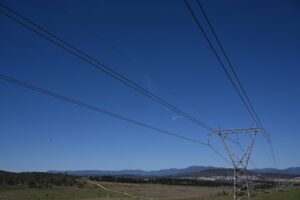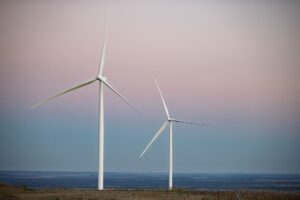The Australian Energy Regulator has won a small but crucial victory for consumers by requiring the network operators in Victoria to base their expenditure plans based on actual usage rather than forecasts.
Australian consumers have been hit by huge rises in transmission and distribution costs in recent years because of around $45 billion in investments allowed for transmission and distribution networks in the last 5-year regulatory period.
 The networks defended their spending as necessary for replacing ageing infrastructure or supplying new regions, but a lot of that expenditure has been criticised as un-necessary, or even as gold plating.
The networks defended their spending as necessary for replacing ageing infrastructure or supplying new regions, but a lot of that expenditure has been criticised as un-necessary, or even as gold plating.
They were based on hugely optimistic forecasts for increases in electricity consumption, when actually demand went in the opposite direction. Rather than increasing by more than 10 per cent over the period, demand has actually fallen by that much.
The network operators benefited, however, because much of their income is based on gaining a certain return on the amount of money invested. The more they invest, the more money they received.
That is now changing in a couple of important ways. For a start, the cost of capital calculations that the networks were allowed to use are being reviewed, and are coming down significantly.
Secondly, in some jurisdictions, the allowable investment will not be based on forecasts, but on actual demand. The AER has succeeded in requiring the Australian Energy Market Operator, which has responsibility for transmission investment in the privatised market in Victoria, to use the most recent data in the latest regulatory year, rather than “historical” demand from a year earlier.
This may seem marginal, but it is part of an increasing crackdown by the AER on network investment. The AER was blamed for much of the excess investment in th e last five years, but in reality it was powerless to stop a lot of it because of the nature of the regulatory regime. But its powers have been increased.
The AER said the latest decision came after major energy users expressed concerns about using historical data to derive the prices and charges for customers whose demand and energy consumption is, or is likely to be, significantly different from what it has previously been. Hence the requirement to use the most recent data, or even the ‘actual” data of an incomplete financial year.
“The use of the latest network data available means that the charges AEMO’s customers pay will be more cost reflective,” AER Chairman Andrew Reeves said in a statement.
“This will benefit all electricity consumers in the long run by sending investment and consumption signals that will encourage the most effective and efficient use of networks’ infrastructure.”
Earlier this week, the AER also approved the Heywood interconnector that links South Australia and Victoria – a move that will allow more wind energy to be fed into the rest of the National Electricity Market.
A bigger interconnector had long been resisted by brown coal generators in Victoria because they feared the arrival of more wind energy – South Australia has nearly half the country’s total wind capacity – would force down the wholesale price of electricity and reduce their revenues and profits.
The upgrade that has received final approval will see the capacity of the interconnector increased from 460 MW to 650 MW.
The AER estimates the cost at this at a nominal $47 million – which is lower than what ElectraNet said it would cost. But the benefits to consumers (in the form of lower electricity costs) would be more than four times that amount at $190 million.
“The upgrade will increase the trade of energy between Victoria and South Australia and has a very high potential to reduce future energy costs for consumers in both regions,” AER Chairman Andrew Reeves said.
“However, we were not convinced that all of the work ElectraNet proposed was necessary to complete the project. ElectraNet proposed to demolish two existing lines at a cost of about $20m on safety grounds. We consider there is a lower cost safe option.”
The anti-wind lobby has even tried to attack the upgrade as a cost on consumers. But even not counting the benefits derived from the reductions to the wholesale price, the AER said the addition to the transmission component of the residential retail bill (it currently accounts for 9 per cent of the retail tariffs), would be less than 0.1 per cent.
The AER also last week made transitional determinations for new expenditure by transmission companies TrasGrid and Transend that it says will pave the way for bill reductions in both NSW and Tasmania.
The determination for 2014/15 saw the AER accept the capital and operating expenditure from both transmission operators, but the AER imposed a much small cost of capital, mostly because of the declining interest rate environment.
So, instead of transmission charges adding $12 to bills in NSW and falling $5 in Tasmania, the AER ruling will see bills reduce by $4 for retail customers in NSW and by $20 in Tasmania.
These are small but significant victories. Perhaps one day the AER will have the power to knock back revenue increases when even past investment is deemed surplus to requirements – as happens in the US. Until that happens, bills won’t actually fall in any significant manner.








